


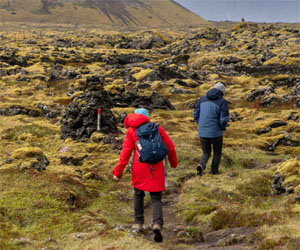
In a world increasingly dominated by screens and concrete, the call of the wild beckons like a siren's song. The allure of untouched landscapes, the thrill of conquering challenging terrains, and the serenity of disconnecting from modernity have led to a renaissance in outdoor exploration. Mastering the art of outdoor adventure is not just about surviving in the wild but thriving in it. It's about embracing nature's gifts, respecting its rhythms, and nurturing a deep connection with the natural world.
Understanding The Basics: Mastering the art of outdoor adventure begins with understanding the fundamentals. Start by learning essential outdoor skills, such as navigation, first aid, and wilderness survival. These skills are your foundation, providing the knowledge and confidence you need to thrive in the great outdoors. Take courses or workshops, read books, and practice these skills until they become second nature.
Gear And Equipment: Choosing the right gear and equipment is crucial for any outdoor adventure. Invest in high-quality gear that suits your specific activities, whether it's hiking, camping, kayaking, or rock climbing. Proper equipment enhances your safety, comfort, and overall experience. However, keep in mind that more gear doesn't always mean a better adventure. Learn to pack efficiently and carry only what you need to minimize your environmental impact.
Leave No Trace: One of the most important aspects of mastering outdoor adventure is practicing Leave No Trace principles. Leave No Trace is an ethical framework that encourages responsible outdoor recreation. It involves leaving natural areas as you found them, minimizing human impact on the environment. This includes packing out all trash, respecting wildlife, and staying on designated trails. By following these principles, you contribute to the preservation of our wilderness areas for future generations.
Fitness And Conditioning: Outdoor adventures often demand physical and mental stamina. Regular physical conditioning is essential for mastering the art of outdoor adventure. Train your body for the specific activities you plan to undertake. Build strength, endurance, and flexibility. Additionally, mental fortitude is equally important. Prepare yourself to face challenges, adapt to unexpected situations, and stay calm under pressure.
Navigation And Orientation: Navigation is a key skill in mastering outdoor adventure. Learn how to read maps, use a compass, and understand GPS devices. Practice navigating in various terrains, such as forests, mountains, and deserts. The ability to find your way and plan routes is essential for a safe and enjoyable adventure.
Environmental Stewardship: Finally, part of mastering outdoor adventure is becoming an advocate for environmental stewardship. Embrace a deep sense of responsibility for the natural world. Get involved in conservation efforts, support local outdoor organizations, and spread awareness about the importance of preserving our wilderness. Leave the places you visit better than you found them, and inspire others to do the same.
Mastering the art of outdoor adventure is a lifelong journey. It's about continuously improving your skills, deepening your connection with nature, and becoming a responsible steward of the environment. While challenges and surprises are inevitable in the wild, with dedication and a commitment to learning, you can turn any outdoor adventure into a life-changing experience. So, heed the call of the wild and embark on your journey to master the art of outdoor adventure.
Embracing The Thrill Of The Unknown
 Rekindling Curiosity: Rediscovering the art of exploration is about rekindling curiosity, embracing the unknown, and seeking out new experiences. It's a reminder that there is always more to learn, discover, and understand, both about the world and ourselves.
Rekindling Curiosity: Rediscovering the art of exploration is about rekindling curiosity, embracing the unknown, and seeking out new experiences. It's a reminder that there is always more to learn, discover, and understand, both about the world and ourselves.
Exploring The Familiar And Unfamiliar: Exploration doesn't always require venturing into remote wilderness or uncharted waters. It can start with exploring the familiar places around us. Take a different route to work, visit a neighborhood you've never been to, or try a new cuisine. Familiar exploration can help cultivate a sense of wonder and openness to the world.
Embracing The Thrill Of The Unknown: One of the most enticing aspects of rediscovering the art of exploration is the thrill of the unknown. Whether it's a spontaneous road trip, a journey into the wilderness, or delving into a new field of study, the exhilaration of stepping into uncharted territory is invigorating.
Facing Challenges And Overcoming Obstacles: Exploration often involves facing challenges and overcoming obstacles. These trials not only build resilience but also lead to personal growth. The lessons learned while navigating through unfamiliar situations can be transformative.
Connection With Nature: Exploration frequently involves connecting with nature, whether it's hiking through forests, diving into the depths of the ocean, or stargazing in remote locations. This connection with the natural world can be spiritually fulfilling and grounding.
Cultivating A Lifelong Learning Mindset: Rediscovering the art of exploration fosters a lifelong learning mindset. It encourages us to ask questions, seek answers, and continually expand our knowledge and horizons.
Recovery Techniques For Sports Injuries
 1. Rest And Immobilization: In the immediate aftermath of an injury, one of the first recovery steps is often rest and immobilization. Rest allows the body to begin the natural healing process, and immobilization can help prevent further damage. This may involve the use of braces, slings, or casts.
1. Rest And Immobilization: In the immediate aftermath of an injury, one of the first recovery steps is often rest and immobilization. Rest allows the body to begin the natural healing process, and immobilization can help prevent further damage. This may involve the use of braces, slings, or casts.
2. RICE Protocol: The RICE protocol is a well-known method for managing sports injuries. It stands for Rest, Ice, Compression, and Elevation. Rest and elevation help reduce swelling, while ice and compression can alleviate pain and inflammation.
3. Physical Therapy: Physical therapy is a cornerstone of sports injury recovery. Skilled physical therapists develop customized exercise programs to help athletes regain strength, mobility, and function. These programs often include stretching, strengthening, and functional exercises.
4. Heat And Cold Therapy: Heat therapy can be beneficial for relaxing tight muscles, increasing blood flow, and easing pain. Cold therapy, on the other hand, can help reduce inflammation and numb pain. The choice between the two depends on the type and stage of the injury.
Rules And Regulations Of Pickleball
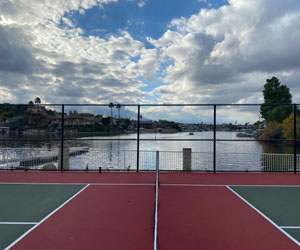 Court Dimensions: A standard pickleball court is 20 feet wide and 44 feet long, with a non-volley zone (the kitchen) extending 7 feet from the net on each side. The kitchen is a no-volley zone, meaning you can't hit the ball out of the air within this area.
Court Dimensions: A standard pickleball court is 20 feet wide and 44 feet long, with a non-volley zone (the kitchen) extending 7 feet from the net on each side. The kitchen is a no-volley zone, meaning you can't hit the ball out of the air within this area.
Scoring: Pickleball is played to 11 points, and you must win by at least two points. In singles, each side gets one serve, while in doubles, both players on the serving team have the opportunity to serve.
The Serve: The serving team starts the game from the right side of the court and must serve underhanded from the baseline. The serve must clear the net and land in the opposing service court, diagonally across from the server. It must also bounce once before being struck by the receiving team. The serving team continues to serve until they commit a fault.
Double Bounce Rule: After the serve, both teams must allow the ball to bounce once before they can engage in a volley (a non-bouncing exchange). This rule ensures that rallies begin with a level of control and reduces the possibility of quick, aggressive plays.
Faults: Common faults in pickleball include stepping into the kitchen while volleying the ball, hitting the ball out of bounds, failing to clear the net, or volleying the ball from the kitchen without letting it bounce. Faults result in the opposing team being awarded a point or the service.
Let Serve: If the serve hits the net and lands in the correct service court, it is called a "let serve" and is retaken without penalty.
Non-Volley Zone Violation: Players are prohibited from volleying the ball from the non-volley zone (the kitchen). Stepping into the kitchen while hitting the ball is a fault.
Serving Position: When serving, players must have one foot behind the baseline and inside the court boundaries. The other foot must remain in contact with or behind the baseline until the ball is struck.


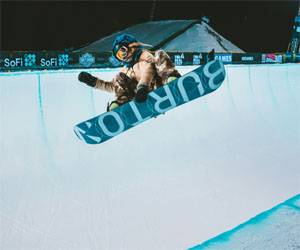
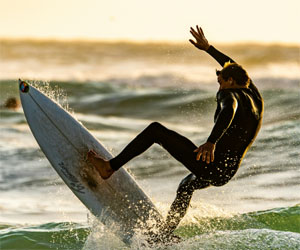
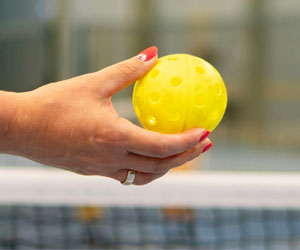

A Game-Changer On The Field
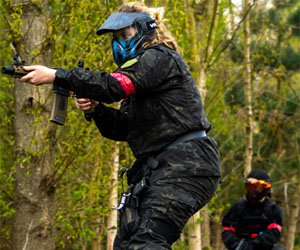 The Importance Of Precision Shots In Paintball
The Importance Of Precision Shots In Paintball
Precision shots in paintball are all about hitting your target with accuracy and effectiveness. These shots are more than just an impressive display of marksmanship; they are a fundamental aspect of the game that can have a significant impact for several reasons:
1. Conservation Of Resources: Paintballs are a finite resource, and running out of ammunition can leave you vulnerable. Making each shot count through precision shooting not only eliminates opponents but also helps conserve your paintballs for crucial moments.
2. Elimination Of Opponents: The primary objective in paintball is to eliminate opponents. Precision shots increase your chances of hitting your target, ensuring that they are eliminated from the game. Fewer opponents mean a better chance of securing victory.
3. Gaining Strategic Advantage: Precision shots can create strategic advantages by eliminating key players on the opposing team. When you take out the enemy's sharpshooters or players responsible for carrying objectives, it disrupts their plans and can lead to opportunities for your team.
4. Staying Concealed: When you hit your target with precision, they are less likely to know your exact location. This allows you to remain concealed and plan your next moves without giving away your position.
5. Winning Firefights: In one-on-one or small group firefights, precision shots can be the deciding factor. Hitting your opponent accurately gives you a significant edge in these encounters.
6. Boosting Confidence: Successfully executing precision shots boosts your confidence and morale.
A Synergistic Relationship
 Fostering A Love For Nature: Birdwatching introduces people to the beauty and wonder of the avian world. It's a gateway to a lifelong love affair with nature. By fostering an appreciation for birds and their habitats, birdwatching enthusiasts are more likely to become advocates for conservation.
Fostering A Love For Nature: Birdwatching introduces people to the beauty and wonder of the avian world. It's a gateway to a lifelong love affair with nature. By fostering an appreciation for birds and their habitats, birdwatching enthusiasts are more likely to become advocates for conservation.
Citizen Science: Birdwatchers often contribute to valuable citizen science projects. Organizations like the Audubon Society and eBird encourage birdwatchers to record their sightings and observations. These data provide crucial insights into bird populations, migration patterns, and habitat trends, aiding in scientific research and conservation planning.
Monitoring Bird Populations: Birdwatchers, with their keen eyes and field experience, are excellent at monitoring bird populations. They can detect fluctuations in bird numbers, identify rare or threatened species, and report unusual events like mass migrations or bird die-offs. This information is vital for conservationists to understand the health of ecosystems.
Habitat Protection: Birdwatchers often advocate for the preservation of important bird habitats. Birding communities and organizations engage in campaigns to protect critical nesting areas, stop deforestation, and promote the establishment of nature reserves. This grassroots effort can have a significant impact on local and global conservation initiatives.
Education And Outreach: Birdwatching is a compelling tool for environmental education. Bird clubs, workshops, and guided tours offer opportunities for people of all ages to learn about birds and their conservation needs. These experiences help individuals connect with the natural world and inspire them to support conservation efforts.